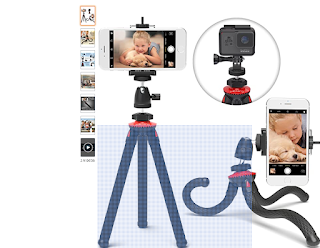Critical Reflection
Our short film represents themes of power and mental health, both of which are common today. As our protagonist suffers from his wife’s death, we can see the emotional toll and how it consumes this. This can be interpreted as a representation of another being controlling and even surveying him to find out his next move. In today’s day and age parties have tried to get more power and control over media, especially by means of technology. In terms of surveying, the film shows how the killer somehow knows where our protagonist is and what he is doing, as if he had been watching his every move. In another sense, this could be an illustration of how governments and other organizations can watch their people and remain in control of their thoughts, emotions, and actions. Also, another common issue represented is the sensitive mental health topic. As previously mentioned, the film does its best to express the protagonist’s feelings of grief and sadness after the loss of his wife. It can be tough for anyone to lose someone close to them but as shown in the film, a shock in your mental health like this can completely consume someone and take over their life, preventing them from moving forward and recovering. The project portrays power and authority while highlighting the sanity of the protagonist.
The combination of the short film, the social media sites, and the postcard all work in unity to promote and display the best elements of the film. On one hand, the film demonstrates a mysteriously thrilling rollercoaster of emotions through one troubled man. This works together with the social media sites, which use similarly toned images that entice and encourage users to watch the premiere of the film. Using social media like these can prove to be a beneficial medium, as technology can and will reach the most amount of people, especially targeting those regularly active on their devices and these platforms. This can be a crucial step in gathering ‘hype’ or excitement for the release of a project like this, which will help the success of the film in the real world. Also, all of the social media and the website used the same image for the film that made the release of the film synonymous with that image. This consistent use of the same image and theme throughout all the promotional elements creates a strong sense of branding. Furthermore, the use of the postcard functions similarly to social media but has an explicit focus on the images and themes depicted in the film shown in one small card that someone can hold and look at repeatedly. When applied cohesively throughout, the website, social media, and postcard work in unity to create a sense of branding for the premiere of the film.
The products combine the use of visuals and conventions to engage the audience. The use of visual appeal can be most effectively demonstrated through the postcard. It relied on the pictures and dark imagery, including a creepy font, to entice the audience to continue to explore the other branding listed on the postcard, which leads the audience to the rest of our products. The postcard is also a physical reminder of the project itself, and as more and more people inadvertently see it, it will familiarize people to the name and give people a taste of what to expect in the film. Another product that engaged the audience through illustrations was the website. Although not as visually dominant, it proved to maintain similar imagery and provided consistent expectations for the film throughout its development. The website goes further than the postcard in providing information about the cast, crew, and release date that people may not be fully aware of. This alone does not stimulate nor engage the audience, but the interactive elements of the website provide a new and engaging experience for each user that further develops a connection to the film. Audience members can even go as far as directly contacting the director via the website to voice concerns or inquiries. Social media expands the ceiling of interactivity by providing a means for users to stay updated with the production and release of the film in real time, and allows them to share and reply to the accounts, further making a unique experience that maintains a direct engagement to the audience.
During our time on creating these products, the team had to conduct research on practical conventions such as camera angles, movement, and shots, mise-en-scene, sound, and editing that would need to be used in the products. For example, in the opening shots of the film, the product had to convey an uneasy and menacing tone over the audience. After careful consideration, we decided to begin with a low angle shot that tracks the figure of the killer. This can create a sense of dominance or intimidation, which can be used to make a character appear more menacing or malicious. The tracking shot follows the subject's movement, which can create a sense of unease or suspense. This type of shot can also make the viewer feel as though they are being stalked or pursued, adding to the overall sense of menace or malice. When these two techniques are used together, the result can be a powerful combination that intensifies the sense of danger or malevolence in these scenes. Additionally, the non-diegetic sounds, including the music and sound effects had been researched with an intent to cause suspense and shock from the audience. The music at the beginning creates a mysterious and suspenseful theme, but forces uncertainty for the fate of the protagonist and the condition of the killer. The sound effects are sharp, sudden noises that accompany scenes that suddenly frighten the audience. The conventions were not applied by chance, but rather methodically selected to maintain uneasy, suspenseful, and scary themes throughout the project.
https://docs.google.com/document/d/1iGNYrkTCmy0eGeYwo_9ZZXJlnXtvvPYK20bUSIsFkw4/edit



Comments
Post a Comment